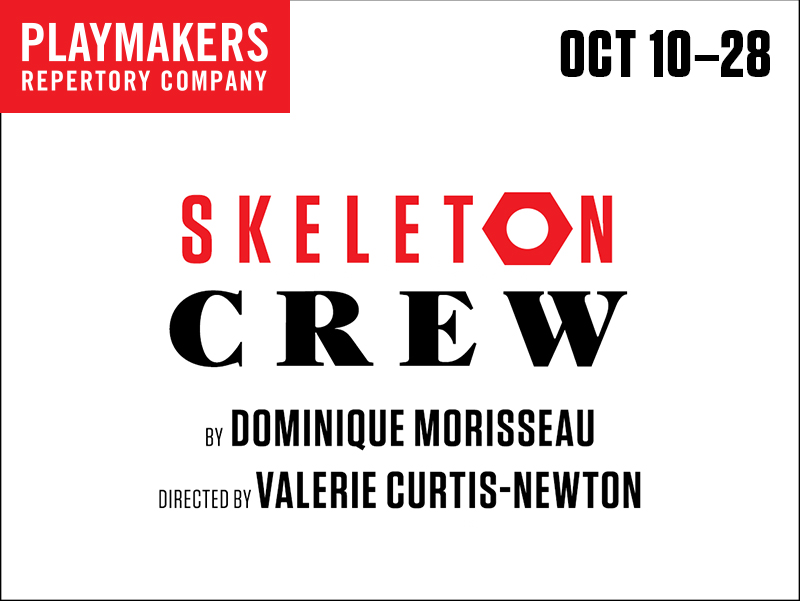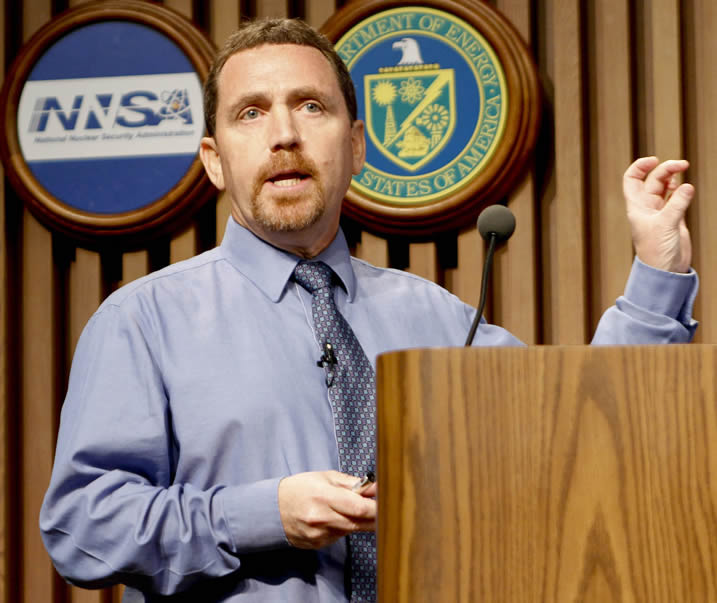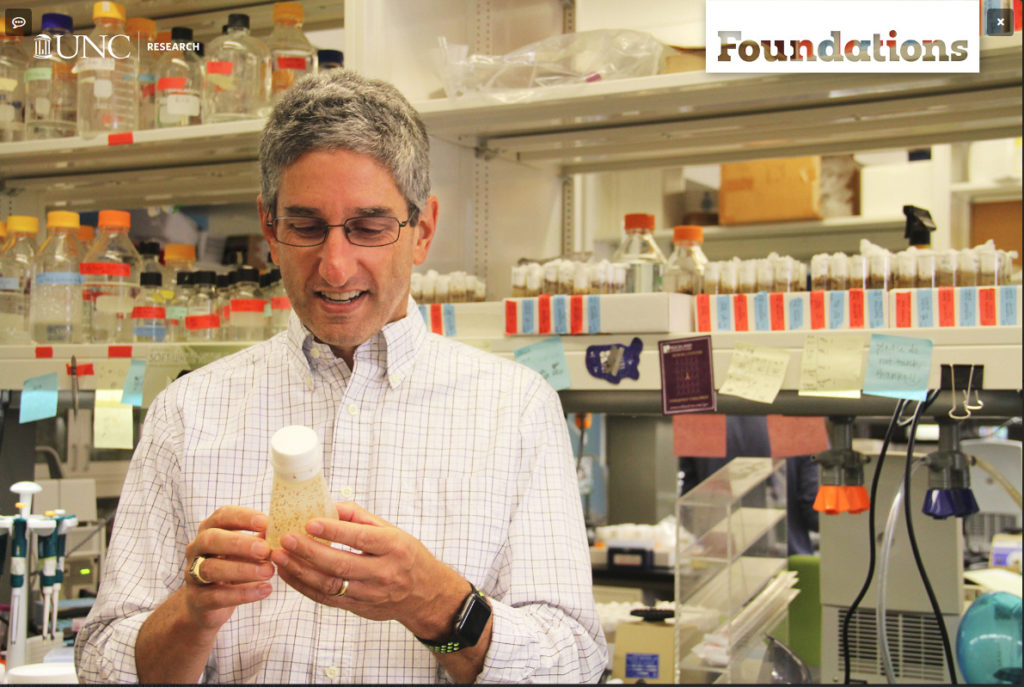
The excess of matter over antimatter is one of the most compelling mysteries in science, according to physicist John Wilkerson at the University of North Carolina at Chapel Hill. If equal amounts of matter and antimatter had formed in the Big Bang more than 13 billion years ago, one should have annihilated the other. Yet matter exists now.

One way scientists are bringing understanding to this complex issue is through the study of neutrinos, tiny, ghostlike particles that are not well understood. Neutrinos are extremely difficult to detect and travel near the speed of light. One hundred trillion solar neutrinos pass through a person every second. Unlike other fundamental particles, they do not have an electrical charge.
“It’s possible that neutrinos could be their own antiparticles,” said Wilkerson, the John R. and Louise S. Parker Distinguished Professor in the physics and astronomy department in the College of Arts & Sciences. He has been studying neutrinos for the last 35 years. “Unraveling the mystery of neutrinos could have profound implications for our understanding of the universe.”
To study neutrinos requires a special environment that is devoid of any interference from cosmic rays, radon, dust, fingerprints and naturally occurring radioactive isotopes. The MAJORANA Demonstrator is helping scientists to do just that — nearly a mile underground at the Sanford Underground Research Facility in Lead, South Dakota, at the site of what was once the most productive gold mine in the Western Hemisphere. Wilkerson leads an international team of 129 researchers from 27 institutions and six nations in this research, under the auspices of the U.S. Department of Energy’s Oak Ridge National Laboratory. Neutrinos are studied by searching for a radioactive decay of germanium -76 that can only occur if neutrinos are their own antiparticles.
Their 10-year experiment has just reached a critical accomplishment in a paper outlined in Physical Review Letters — collaborators have shown they can shield germanium detectors from background radioactivity, laying the groundwork for building a much larger, ton-scale experiment to study the nature of neutrinos.

“Imagine if you’re trying to look at a candle flickering a mile away and the sun is shining. You wouldn’t be able to see the candle because the sun is sending out too much light,” Wilkerson said. “We are eliminating all outside interference, and we’ve been working on getting to this critical point for about a decade. It was important that we show that backgrounds can be low enough to justify building a larger detector.”
Just as bigger telescopes collect more light and enable viewing of fainter objects, increasing the mass of germanium will allow for a greater probability of observing the postulated rare decay.
“It’s exciting to be learning about nature, what people don’t know,” Wilkerson said, in reflecting on why he has studied the mysterious particles for so long. “There are a lot of questions we are trying to understand — how are the elements created? How did the early universe evolve? Why are we here?”
In addition to professor Reyco Henning and research scientist Mark Howe, many UNC graduate and undergraduate students have been involved in the experiment over the years. Wilkerson said he often gets asked: What are you producing in the underground research facility?
“In place that once produced gold, our product of today is just as valuable — we are training the next generation of scientists,” he said. “We’re giving them world-class facility and technology exposure. Our students do outstanding work — some stay in fundamental science, but others take the skills they’ve learned through the MAJORANA experiment and go on to work in technology and other areas.”
Read the paper. To learn more about the latest research on the MAJORANA Demonstrator and to see more photos, read this release from Oak Ridge National Laboratory.
Read a fall 2013 Carolina Arts & Sciences magazine/Endeavors story about John Wilkerson’s research.
By Kim Spurr, College of Arts & Sciences




